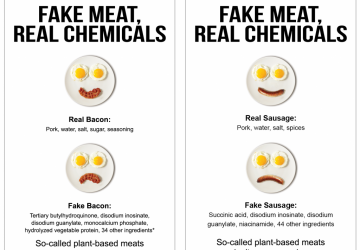For years, public health activists have clamored for mandatory calorie labeling in restaurants as a way to fight obesity—despite acknowledging a lack of scientific support for the concept. “For some of the most important public health problems today, society does not have the luxury to await scientific certainty,” menu labeling activists Kelly Brownell and David Ludwig wrote in JAMA last year. Centers for Disease Control and Prevention chief Thomas Frieden (formerly New York City’s top health nanny) previously acknowledged that “we don’t have 100 percent proof that it’s going to work.” And food zealot Marion Nestle weakly proposed, “It’s worth a try,” separately offering this stunning rationale: “I can't do it [count calories without labeling], and I figure if I can't do it no one can do it.”
Now that menu labeling is federal law (it was attached to this year’s health care reform bill) and restaurants are preparing costly cosmetic changes, one of labeling’s strongest advocates is admitting some doubts of her own. In the current issue of the New England Journal of Medicine, Nestle unenthusiastically argues that menu labeling is “worth the trouble,” but features plenty of serious flaws:
Shortly after the labeling began, investigators collected cash-register receipts and survey responses from more than 1100 fast-food customers in low-income New York City neighborhoods and in Newark, New Jersey, a city with comparable low-income neighborhoods but no menu labeling. Although nearly 28% of New York customers said they noticed and were influenced by calorie labeling, this group purchased about the same number of calories as everyone else….
My personal observations raise several concerns about the implementation of this policy. In some chains, the calorie numbers are posted in print too small or too obscure to be read easily. Some chains post amounts to the absurdly precise single calorie…One comparison of actual measurements to posted amounts revealed wide deviations, sometimes by as much as a factor of two.
That’s not exactly a ringing endorsement. It’s not surprising to us that menu labeling hasn’t turned out so well (we predicted as much). When public health activists take a “damn the torpedoes” approach to public policy, the results seldom live up to the hype.
Going forward, it sounds like Nestle is searching for yet another government intervention to make up for the shortcomings of forced menu labeling. What will it be? Traffic lights on the salad bar? Flashing calorie counts with high-decibel vuvuzela alarms? We can hardly wait.




